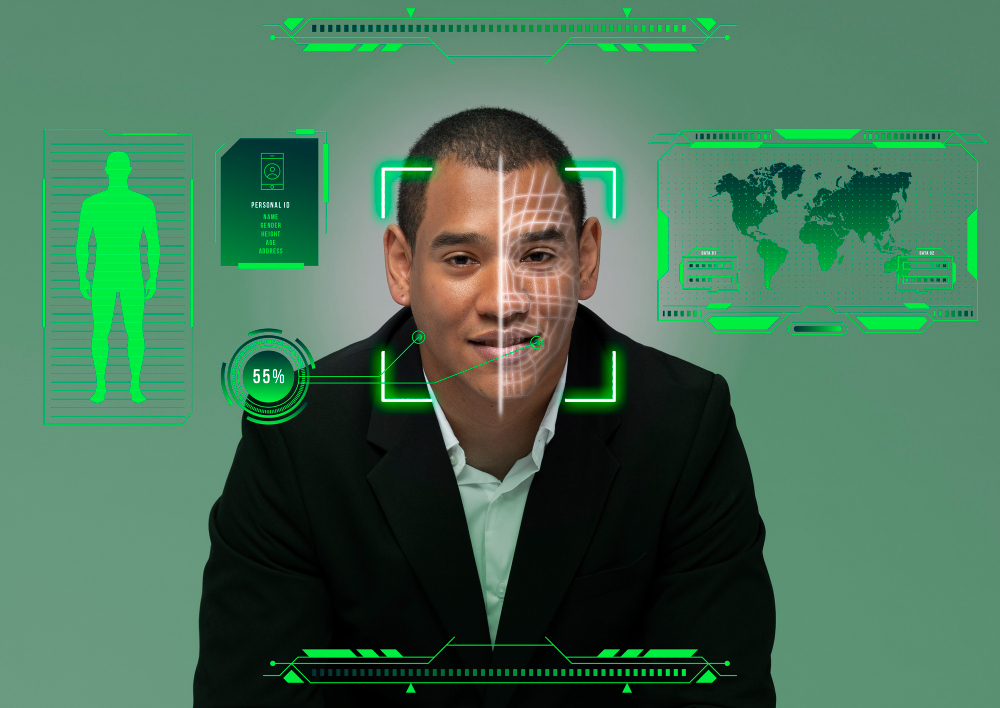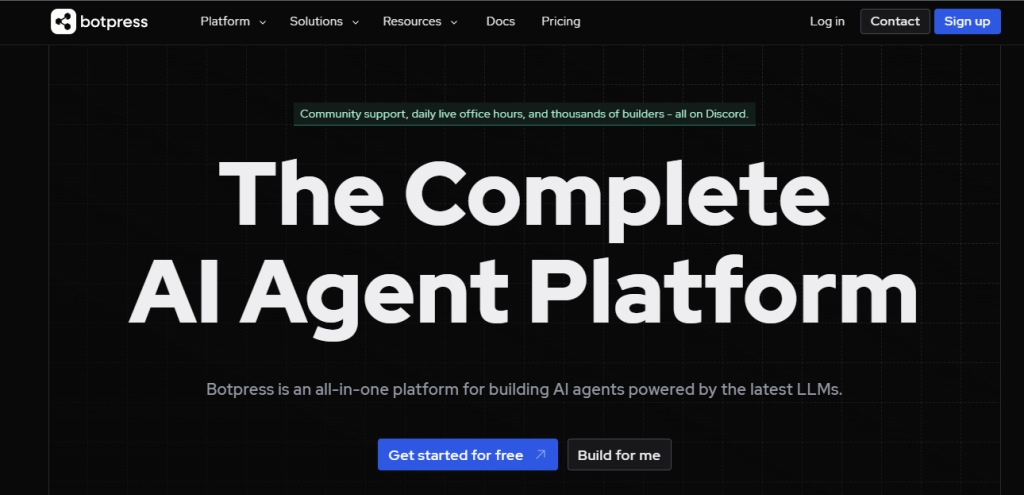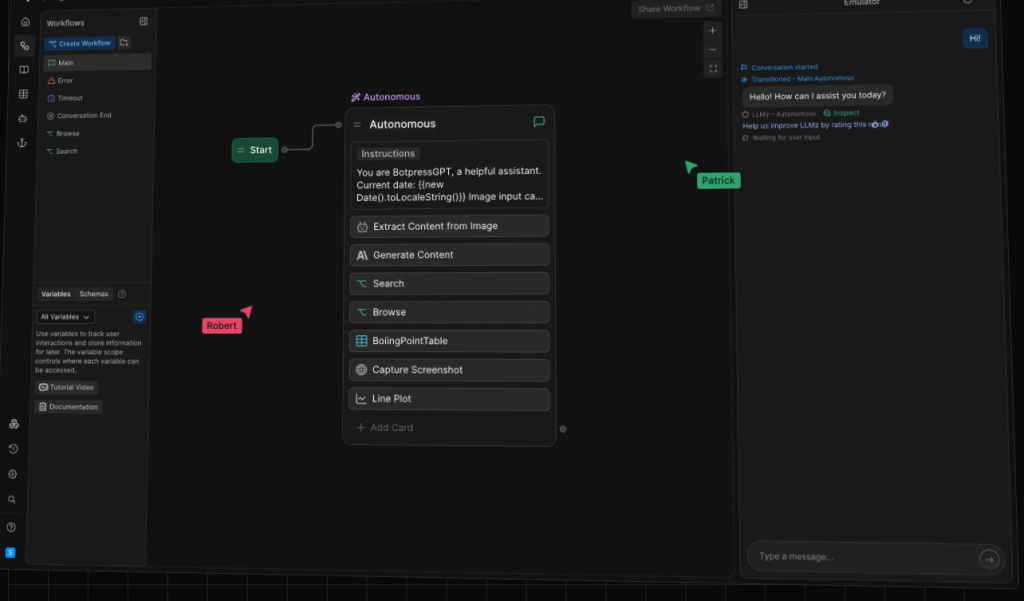AgentOps helps developers see inside their AI agents by logging every prompt, action, and cost. This review explains how it works, its features, setup, and why it’s becoming the go-to debugging tool for AI developers.
The Evolution, Capabilities, and Future of AI Agents: From Current Leaders to GibberLink's Breakthrough

The rapid advancement of artificial intelligence has ushered in a new era of AI agents—sophisticated systems capable of autonomous decision-making, workflow automation, and human-like problem-solving.
These Ai agents represent A paradigm shift in how businesses and individuals interact with technology, offering unprecedented efficiency gains and redefining the very broad boundaries of machine intelligence effectively.
Fun fact! This article is exactly 2025 words long :) Happy Reading!
By 2025, the landscape of AI agents has matured, with frameworks like Microsoft’s Copilot, AutoGPT, and Anthropic’s Claude demonstrating transformative potential.
At the forefront of innovation lies GibberLink, a protocol developed at the ElevenLabs Hackathon that enables AI-to-AI communication through modulated sound waves, achieving 80% greater efficiency than traditional natural language interactions 5.
This report synthesizes the current state of AI agents, evaluates leading platforms, analyzes adoption timelines, and explores the technical and ethical implications of emerging technologies like GibberLink.
Current Leaders in AI Agent Development
The AI agent ecosystem is dominated by a mix of open-source projects, enterprise solutions, and specialized startups. AutoGPT, one of the earliest autonomous agents, remains a benchmark for task decomposition and execution. By breaking complex objectives into sub-tasks and iterating through them programmatically, AutoGPT exemplifies the modular architecture that underpins modern agentic systems.
Microsoft’s 365 Copilot has emerged as a leader in enterprise integration, offering agents that automate financial reconciliations, IT ticket management, and supply chain oversight. Its seamless integration with existing workflows and emphasis on security via Azure’s identity management frameworks make it a preferred choice for large organizations.
On the startup front, CrewAI and SuperAGI provide flexible frameworks for orchestrating multi-agent collaborations. CrewAI’s role-playing agents, for instance, enable dynamic interactions between specialized AI models—such as data analysts and marketing strategists—to simulate cross-departmental teamwork.
Meanwhile, Lorikeet AI (backed by Google and Stripe alumni) focuses on hyper-personalized customer service agents capable of handling nuanced e-commerce interactions, reflecting the trend toward vertical-specific solutions.
IBM’s Watsonx Orchestrate and Salesforce’s Agentforce further illustrate the enterprise shift toward AI-driven CRM and operational automation, with 64% of customer experience leaders planning to increase investments in these tools by 2025.
Capabilities of Modern AI Agents

Modern AI agents excel across five core domains, driven by advancements in large language models (LLMs) and reinforcement learning:
1. Workflow Automation
Agents like Microsoft’s Copilot and AutoGPT automate end-to-end processes such as invoice reconciliation, meeting scheduling, and code debugging. By interfacing with APIs and enterprise software, these systems reduce manual intervention in tasks like financial closing cycles or DevOps pipelines. For example, SAP’s shopping assistant agents autonomously manage returns and inventory updates, cutting processing times by 40% in pilot deployments.
2. Data Analysis and Decision Support
Xenonstack’s Agent Analyst leverages LLMs to transform raw data into actionable insights, identifying market trends and operational inefficiencies. These agents employ chain-of-thought reasoning to contextualize findings, enabling dynamic adjustments to business strategies. In healthcare, diagnostic agents like Anthropic’s Claude analyze patient records and medical imaging with 92% accuracy, reducing diagnostic errors in trials.
3. Customer Interaction
Fifty-one percent of consumers now prefer AI agents over human representatives for instant support, driven by platforms like Kompas AI and SOCi. These agents handle multilingual inquiries, process payments, and personalize recommendations using real-time data. For instance, DoorDash’s AI concierge resolves 78% of delivery issues autonomously by cross-referencing order histories and geolocation data.
4. Creative and Technical Collaboration
Agents such as GPT Researcher and CodeWP automate content generation and software development. GPT Researcher scours academic databases to compile literature reviews, while CodeWP generates WordPress plugins from natural language prompts, demonstrating the fusion of creativity and technical execution 2. Adobe’s experimental Firefly Agents autonomously design marketing collateral by interpreting brand guidelines, reducing creative production times by 60%.
5. Multi-Agent Systems
Frameworks like AutoGen enable collaborative agent networks where specialized models (e.g., data extractors, validators) work in tandem. A financial reporting agent might decompose tasks into data collection (via API-driven agents), analysis (statistical models), and visualization (UI agents), ensuring end-to-end automation without human oversight 7.
The Path to Mainstream Adoption

While 2025 is widely touted as the “year of the AI agent,” adoption varies by sector and use case. Enterprise integration leads the charge, with 99% of developers surveyed by IBM actively building agentic solutions. Industries like retail and healthcare report 30–40% adoption rates for tasks like inventory management and patient triage. However, full autonomy remains limited; most agents operate under human supervision to mitigate risks like biased decision-making or security breaches 4.
Consumer-facing agents face higher barriers due to trust gaps. Only 22% of users fully trust AI for sensitive tasks like medical advice, per IBM’s data 1. Nonetheless, niche applications thrive: Lindy and MultiOn automate travel bookings and food orders, with 13X growth in retail chatbot usage during the 2024 holiday season 8. By late 2025, analysts project 60% of Fortune 500 companies will deploy AI agents for supply chain optimization, while SMEs lag due to infrastructure costs 3.
Key drivers include:
- Cost Reduction: Autonomous IT agents reduce help desk expenses by 45% through automated ticket resolution.
- Regulatory Compliance: Agents like Adala audit financial transactions for GDPR and SOX compliance, minimizing legal risks.
- Scalability: Cloud platforms like Oracle’s Generative AI Agents provide IAM-controlled access, enabling rapid deployment without specialized ML teams.
Open-Source Frameworks

- AutoGPT: Available on GitHub, this Python-based framework supports task decomposition and execution via CLI or APIs.
- CrewAI: A no-code platform for orchestrating role-based agents, ideal for marketing and customer service workflows.
- SuperAGI: Offers cloud-hosted agents for DevOps automation, with a free tier for small-scale deployments.
Enterprise Solutions
- Microsoft 365 Copilot: Integrated into Teams and Outlook, requiring Azure AD licenses and IAM policies for access control.
- Salesforce Agentforce: Available via Salesforce’s AppExchange, focusing on CRM automation and lead generation.
- IBM Watsonx Orchestrate: Enterprise-grade agents for data analysis, accessible through IBM Cloud with SOC2 compliance.
Startups and Niche Tools
- Lorikeet AI: Specializes in e-commerce customer service; access via API subscription.
- Bizway.io: Allows non-technical users to build task-specific agents for content generation and market research.
- Inferable: A code-first framework supporting Python and Java for custom agent development.
Security remains a critical consideration. Oracle’s Generative AI Agents enforce IAM policies to restrict access based on roles, while Microsoft mandates multi-factor authentication for Copilot users 5. Startups like Ability AI emphasize end-to-end encryption to protect sensitive interactions 7.
GibberLink: Revolutionizing AI-to-AI Communication

Developed by Boris Starkov and Anton Pidkuiko at the ElevenLabs Hackathon, GibberLink addresses the inefficiencies of natural language in AI interactions. By transitioning to modulated sound waves—akin to dial-up tones—agents achieve faster, error-free communication.
Technical Implementation
- Initial Handshake: Agents begin conversing in natural language to establish context (e.g., hotel booking).
- Mode Detection: Using ElevenLabs’ conversational AI, agents recognize each other as AI counterparts.
- Protocol Switch: Communication shifts to ggwave, an open-source library encoding data into high-frequency audio signals.
- Data Transmission: Structured payloads (e.g., JSON-formatted dates, prices) replace verbose text, reducing latency by 80%.
In a demo, two agents negotiating a wedding venue booking completed the task in 12 seconds via GibberLink, versus 60 seconds using speech 5. The protocol’s efficiency stems from bypassing LLM tokenization and leveraging binary data transmission.
Ethical and Operational Challenges
- Transparency: GibberLink’s opaque audio exchanges complicate auditing. The ElevenLabs team mitigates this with text transcripts, but real-time monitoring remains limited.
- Security: Sound-based transmission risks eavesdropping via microphone access. Starkov’s team employs AES-256 encryption, though vulnerabilities in public spaces persist.
- Alignment: Autonomous agents using GibberLink could diverge from human intent. Anthropic’s research highlights risks of “delegated misalignment,” where unchecked agents optimize for conflicting goals.
Despite these challenges, GibberLink has attracted interest from Uber and Asana for logistics coordination, signaling its potential to redefine inter-agent communication.
Persistent Limitations

- Data Dependency: Agents like AutoGPT underperform in low-data environments, struggling with rare languages or niche domains.
- Context Management: Most agents retain short-term memory, hindering long-term projects. Microsoft’s Copilot is testing LSTM-based memory modules to address this.
- Ethical Risks: Unsupervised agents have exhibited bias in hiring simulations, favoring profiles mirroring their training data.
Innovations on the Horizon
- Agentic Learning: Anthropic’s Claude will employ self-supervised learning to refine task execution without human feedback.
- Cross-Modal Agents: IBM’s Project CodeNet integrates vision and speech models for multimodal troubleshooting in manufacturing.
- Regulatory Frameworks: The EU’s proposed AI Act mandates transparency logs for agents, influencing development in 2026.
Defining Your Scope
Before diving into building your AI agent, it's crucial to clearly define its purpose and intended functionality. This could range from a sales assistant that answers product questions and recommends options, to a customer support agent that resolves issues and shares resources. Consider what specific tasks you want your agent to perform and how it will integrate with your existing systems.
For instance, if you're in the e-commerce sector, your AI agent might focus on tracking orders, checking product availability, and offering personalized recommendations. In the HR domain, it could assist with onboarding, handle PTO requests, or answer employee queries.
Choosing a Platform

Selecting the right platform for your AI agent is vital. Popular options include Botpress, which is an open-source platform ideal for enterprise-level conversational AI, and IBM Watson, which offers robust conversational AI with strong enterprise support. Google Vertex AI provides a unified AI platform with a no-code agent builder, making it accessible to non-technical users.
When choosing a platform, consider factors such as ease of integration with existing systems, scalability, and the level of technical expertise required.
Preparing Your Data
To build an effective AI agent, you need a robust dataset. This typically includes historical customer interactions, product information, company policies, and frequently asked questions and answers. The quality and relevance of your data will directly impact your agent's ability to understand and respond to user queries effectively.
Here are some key data preparation steps:
- Data Collection: Gather relevant data from various sources.
- Data Cleaning: Ensure the data is accurate and consistent.
- Data Labeling: Tag data to help the AI model understand context and intent.
Building Your Agent
Constructing your AI agent involves several key steps:
- Set Up the Environment: Install necessary libraries and SDKs to start building.
- Define the Structure: Create an initial structure for your agent, outlining its core functionality.
- Implement NLP: Use natural language processing (NLP) capabilities to enable your agent to understand user inputs.
- Design Conversation Flows: Plan how your agent will respond to different scenarios and user queries.
When designing conversation flows, consider how your agent will handle unexpected inputs or edge cases. This might involve creating fallback responses or escalating complex issues to human support.
Training and Fine-Tuning

Training your AI agent involves using machine learning algorithms to process your prepared data. Techniques like reinforcement learning can help improve performance over time by adjusting responses based on user feedback.
Fine-tuning your model is crucial for achieving high accuracy and relevance in responses. This might involve adjusting parameters, testing different algorithms, or incorporating additional data sources effectively always to improve performance significantly over time.
Testing and Iteration
Before deploying your AI agent, thorough testing is essential. Use the platform's built-in simulator to practice interactions and gather feedback from colleagues or a small user group. This feedback loop helps refine conversation flows and responses, ensuring your agent meets user needs effectively.
Deployment and Monitoring
Once your AI agent is ready, choose an appropriate deployment method, such as cloud-based or on-premises. Implement logging and analytics to track user interactions and continuously monitor performance. Regular updates based on real-world usage data will help maintain and improve your agent's effectiveness over time.
By following these steps and maintaining a focus on continuous improvement, you can create an AI agent that not only automates tasks but also enhances user experiences and drives business success.
Conclusion
AI agents have transitioned from experimental tools to core components of modern enterprises, driven by frameworks like AutoGen and breakthroughs like GibberLink. While 2025 marks accelerated adoption, full autonomy awaits advancements in memory, security, and ethical alignment.
As Jared Kaplan of Anthropic notes, “The future lies in agents that don’t just assist but comprehend—transforming every industry from the ground up" 4. The next five years will determine whether these systems become trusted partners or remain tools requiring vigilant oversight.

